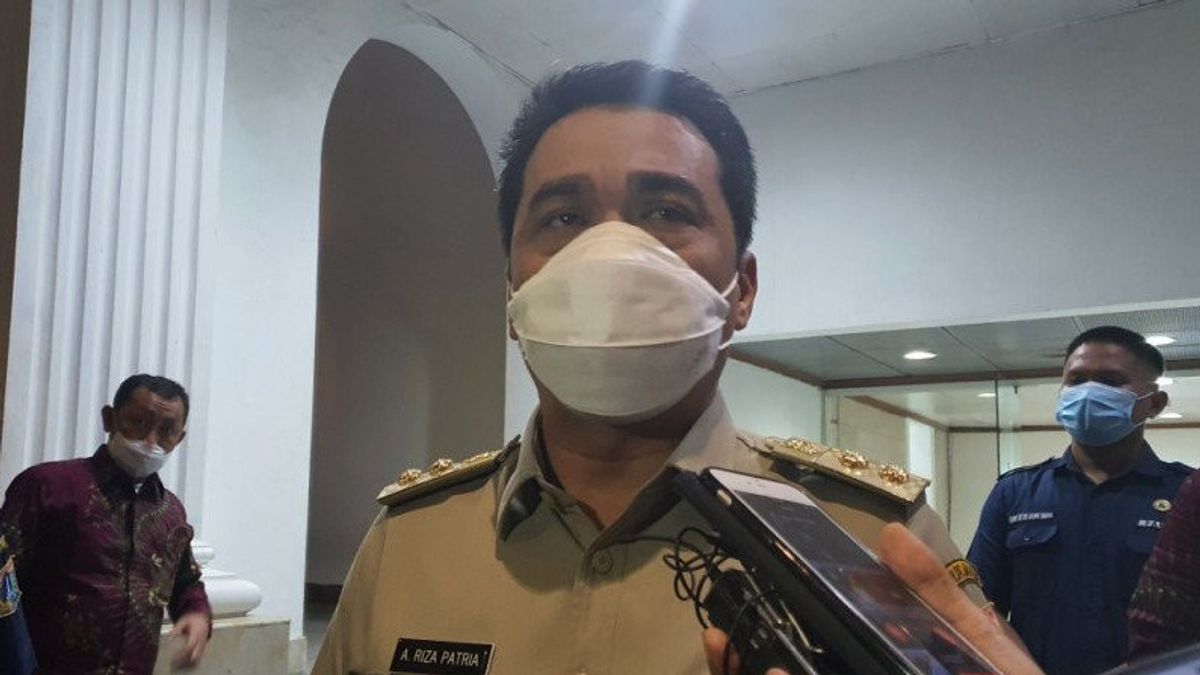JAKARTA - Deputy Governor of DKI Jakarta Ahmad Riza Patria responded to a study on the active Baribis Fault located in South Jakarta. This fault has the potential to cause an earthquake.
Riza said that Indonesia is indeed a country that has the potential for disasters, including the Baribis Fault. Therefore, the DKI Provincial Government seeks mitigation in the form of simulating the occurrence of disasters.
"Our provincial government is continuing to seek support and regulations regarding prevention and control actions, including preparing simulators for training for the disaster," said Riza at DKI Jakarta City Hall, Tuesday, June 28.
In addition, Riza continued, the Regional Disaster Management Agency (BPBD) also continues to seek socialization to the community regarding potential disasters in the capital city.
Previously, the Meteorology, Climatology and Geophysics Agency (BMKG) confirmed the findings in the journal Scientific Reports (Nature) which stated that the Baribis Fault in southern Jakarta was proven active with an estimated shear rate of about 5 millimeters per year.
"In addition, this fault activity is supported by the results of monitoring of the BMKG seismograph sensor equipment where there is earthquake activity that is observed in the fault line, even though it is of a small magnitude of 2.3–3.1," said BMKG Earthquake and Tsunami Mitigation Coordinator Daryono.
The fault line passes south of Jakarta as the Jakarta segment, in addition to the segment in the east which can be referred to as the Bekasi-Purwakarta segment. So that it can be said that southern Jakarta is prone to earthquakes. "Of course, with the existence of this active fault line, there is the potential for an earthquake. If you look at the earthquake data from the BMKG monitoring, it appears that the southern segment of Jakarta has not shown earthquake activity, but the results of the study show a high level of earthquake activity. high compression, which is thought to be related to a locked area. This is something to watch out for," said Daryono.
Daryono said the Baribis Fault structure is estimated to have a length of about 100 km. However, this fault line does not appear to be continuous as a single fault unit, but rather into segments, each segment having varying lengths.
Thus, further studies are needed to further detail these fault segments.
Based on the results of the study, the fault line has a significant earthquake potential. Based on BMKG records, shallow crustal earthquake activity due to small active faults can trigger damage.
BMKG has a lot of evidence that small earthquakes even with a magnitude of 4.5 can cause damage because the hypocenter is shallow and the epicenter is close to the surface. If it turns out that the earthquake that occurs has a greater strength, of course the potential for damage will be even greater.
"The importance of implementing real or concrete mitigation efforts in the Jakarta, Bogor, Tangerang, Bekasi, Karawang, Purwakarta and surrounding areas is to create earthquake-resistant buildings with strong structures and earthquake risk-based spatial planning that refers to the earthquake hazard microzonation map at a scale details," he added.
The English, Chinese, Japanese, Arabic, and French versions are automatically generated by the AI. So there may still be inaccuracies in translating, please always see Indonesian as our main language. (system supported by DigitalSiber.id)













